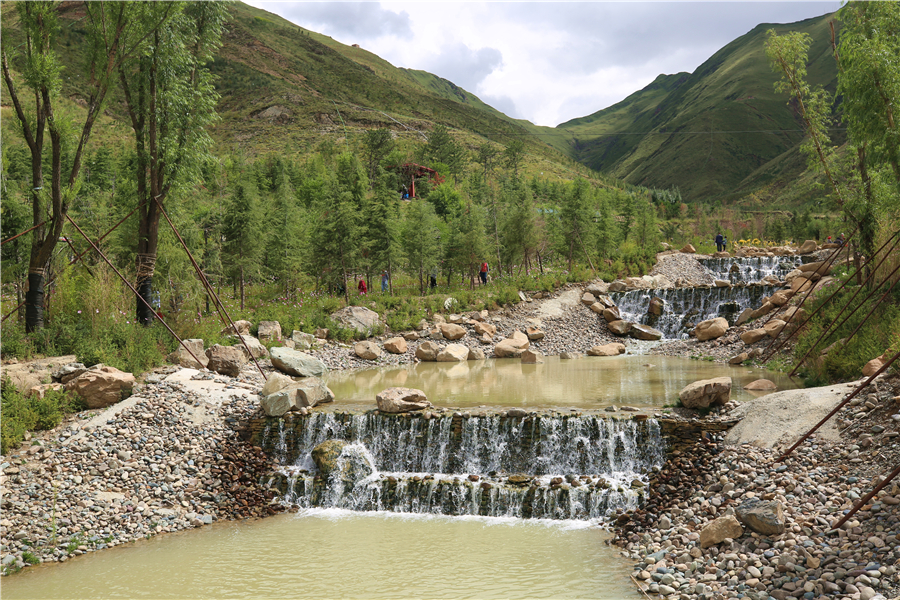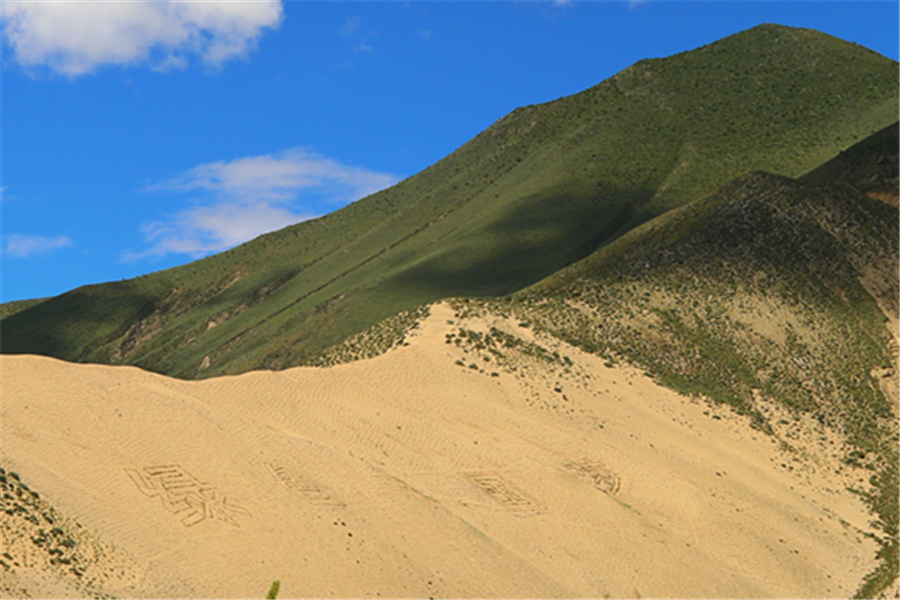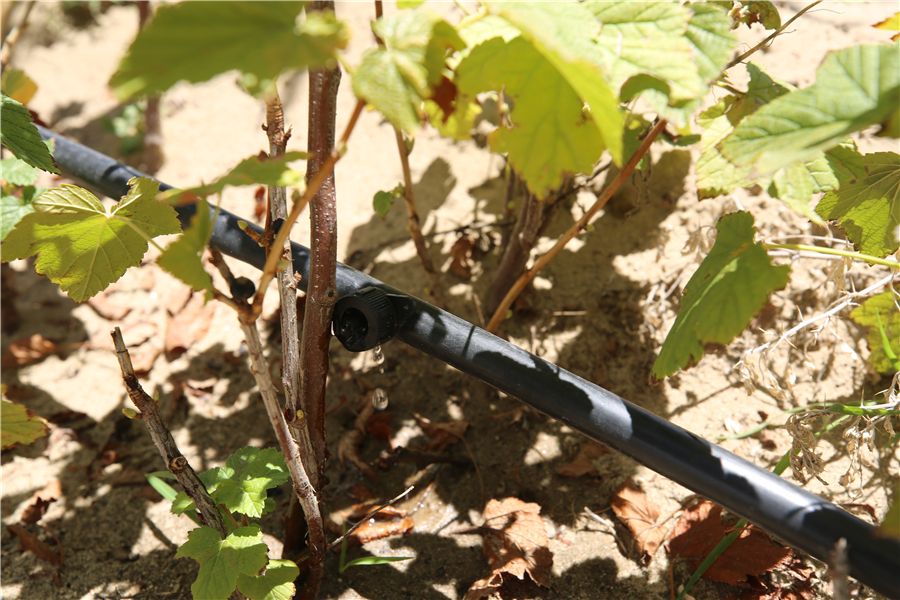Green Chinese Dream: Ecological milestones in Tibet
Over the last few years, the blue sky, white clouds, clear water and sweet air, together with recent greening projects, have served to enhance China's Tibet Autonomous Region reputation as a "paradise on earth." The changes are attributed to the strong efforts made to protect the ecology of this region in southwest China.
|
|
|
A photo of Yarlung Tsangpo River running from Lhasa to Shannan in China's Tibet Autonomous Region. [Photo by Zhang Jiaqi/China.org.cn] |
Trees up the mountains: barren land changed into parks
"It's very comfortable because everything here is so close to nature." said Zhuoga whilst sitting in a pavilion at the foot of the South Mountain in Lhasa. She came to the South Mountain Park for a short holiday with her family.
The South Mountain is located south of the Potala Palace across the water. Years ago, it was a barren mountain. After the afforestation efforts over the past few years, arbors, shrubs and grass present a spectacular view from the bottom to the top of the mountain. Bees and butterflies fly over bouquets of galsang flowers, and streams purl under wooden bridges.
According to Luosang Duoji, an engineer of the Forestry Bureau of Lhasa, 1.3 million people from 200 organizations have participated in the volunteer tree-planting project since 2012, and after four years of afforestation, the park has now begun its conservation period set to last five years.
He said, the 221.5-hectare afforested area planted with 750,000 nursery stocks can decrease the sediment by around 4000 tons and prevent water and soil loss. Moreover, breakthroughs have been made to allow the planting of trees on mountain land 4000 meters above sea level.
|
|
|
The photo shows the South Mountain in Lhasa, capital of China's Tibet Autonomous Region. [Photo by Zhang Jiaqi/China.org.cn] |
|
|
|
Waterfalls in the South Mountain Park of Lhasa, capital of China's Tibet Autonomous Region. [Photo by Zhang Jiaqi/China.org.cn] |
From river to lake: a dam connecting scenic parks attracts wild gulls
"For me, this is not merely where I live. It is more of a place where I can watch the birds every day," said Qiangba, a local resident, while standing on the third dam built over the urban section of the Lhasa River in Lhasa.
The construction of the dam began in March 2013, and stretches 1.04 kilometers from the Sun Island down the Lhasa River. By July 2014, a 581-meter-long dam with 30 apertures already stood over the river.
The dam, capable of river channeling, water storage and traffic connection, has created a 930,000-square-meter flat lake on the highland. According to Teng Baoting, deputy director general of the Forestry Bureau of Lhasa, the dam has increased the air humidity by nearly eight percent and improved the ecology overall since its operation from October 2016,
Over the past four years, the construction and operation of the dam and the scenic parks along the river banks have transformed the stone beaches into a land with lush trees and flowers, a favorable environment for both the wild birds and the residents.
|
|
|
The photo shows the downstream of the third dam built over the urban section of the Lhasa River in the capital of China's Tibet Autonomous Region. [Photo by Zhang Jiaqi/China.org.cn] |
|
|
|
The photo shows the river-side walkway of the scenic park on the bank of Lhasa River in the capital of China's Tibet Autonomous Region. [Photo by Zhang Jiaqi/China.org.cn] |
Keep pushing: Modern technologies facilitate afforestation
Sand dunes used to be the landscape across the banks of the Yarlung Tsangpo River in the 1980s. But through decades of efforts, green corridors comprising domestic and introduced psammophytes have taken root on this stretch of sterile land.
A great deal of greenery has been added to the beautiful landscape of Tibet, but a pleasant ecological environment resembling the paradise requires continuous endeavors and efforts. In April 2017, the sand control project of Shannan was launched to address the sandy land in several counties of Shannan Prefecture and improve the overall ecology there.
"Besides the local plants, we have planted fruit trees and traditional Chinese medicinal herbs like licorice in the sand. The trees are grown through drip irrigation with the underground water pumped up from the three new wells. Every one of the trees has a QR code, and data are available through a simple scan," the person in charge of the project introduced. He added that a greater number of modern technologies are being utilized in the afforestation program. "Our big-data station monitoring the data of weather and rainfall here helps us replicate our sand control experience in Kubuqi Desert."
So far, over 2.66 square kilometers of salix and over 1.33 square kilometers of licorice have been planted under this project. With its 2017 tasks fulfilled, the new round of afforestation in Shannan has embraced a good start.
|
|
|
The photo shows five Chinese characters which literally means "Green Chinese Dream" on the mountains close to the sand control area under the sand control project of Shannan in China's Tibet Autonomous Region. [Photo by Zhang Jiaqi/China.org.cn] |
|
|
|
The photo shows the drip irrigation pipe in the sand control area under the sand control project of ShannanPrefecture in China's Tibet Autonomous Region. [Photo by Zhang Jiaqi/China.org.cn] |






